Features of the ultraviolet lamp
Ultraviolet lamps have long been used to treat rooms in medical institutions. Later they became known as bactericidal and used in the home. Devices are often purchased by parents after the birth of their child to keep him or her safe from harmful microorganisms.
As interest in UV lamps increased, different types of devices began to appear to meet the specific needs of buyers. For example, some devices used in hospitals are not suitable for the home. It is worth considering the types of emitters, the principle of operation and purpose.
What is a UV lamp
Ultraviolet lamp is a device that emits artificial light, which is endowed with bactericidal properties. The lamp emits part of the spectrum of sunlight - a neon glow of purple is formed in the bulb. When the device is plugged in, the mercury vapor inside the bulb begins to interact with electromagnetic discharges, emitting ultraviolet light.
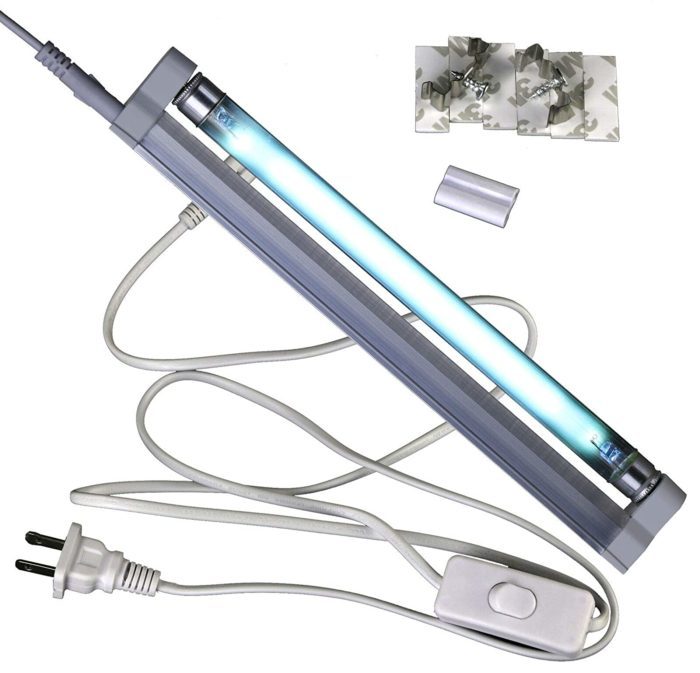
The inside of the bulb sometimes contains cadmium, indium, or bismuth instead of mercury. The light emitted is in the range between X-rays and rays visible to the human eye. The UV lamp looks like an elongated bulb with electrodes around the edges that create a discharge to interact with the mercury. Externally it resembles a standard daylight lamp.
How it works
The principle of operation of an ultraviolet lamp is almost identical to a quartz lamp. The main difference is that here, in most cases, is a special uviolet glass instead of quartz. It is necessary to filter out aggressive UV radiation. Because of this, the device does not emit ozone, but only harmless soft ultraviolet.
Inside the housing in the mercury vapor are molybdenum current-carrying filaments and electrodes. The housing is sealed and equipped with a solid base.
Varieties
Among the existing UV disinfection emitters, the most popular have been bactericidal and quartz lamps. In classic devices, the bulb is made of quartz glass. During operation, the device emits harmful ozone into the air.
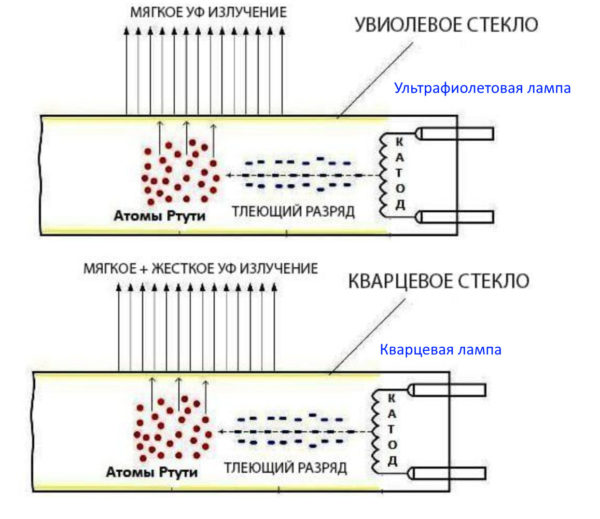
Such devices are more often used to treat medical and industrial premises, where it is not necessary to be a person at the time of treatment. Bactericidal emitters are installed bulb of uviolet glass. Structurally, ultraviolet lamps can be as follows:
- portable. Thanks to their compactness and light weight they are actively used in everyday life. They are used to treat toilets, tables, sinks and shoes;
- open. They kill pathogenic microbes in the air and on all surfaces. Keep animals, people and plants out of the room while the device is working. Suitable for treating large areas;
- closed .. These are called closed-type recirculators. They are often used in the home, as the treatment can be carried out in the presence of a person. The lamp design includes a fan. It is necessary to draw the air inside, where the ultraviolet rays are disinfected. Then the purified air flows back into the room.
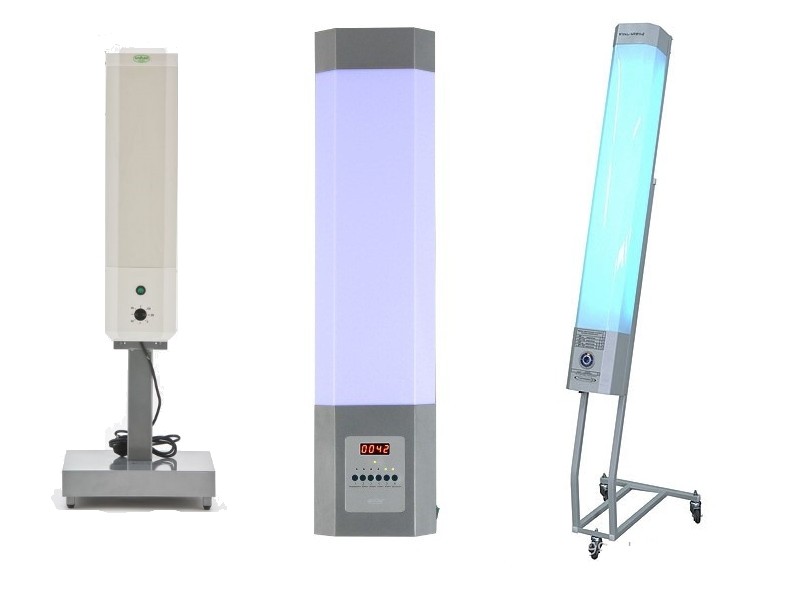
In addition to design differences, ultraviolet lamps are divided by the type of installation. They can be:
- floor. Best suited for disinfecting spacious rooms. They are often placed in the corner of the living room, corridor, bedroom or nursery. Sometimes used to disinfect closets;
- hinged. They are installed on the ceiling or wall. The lamp only needs to be mounted on a secure mount. Due to the large number of shapes and colors, the device can be selected to match the design of the room. The devices are characterized by increased efficiency;
- table. Usually have a laconic design and small size. These models can be used in any room, regardless of whether there are people there or not.
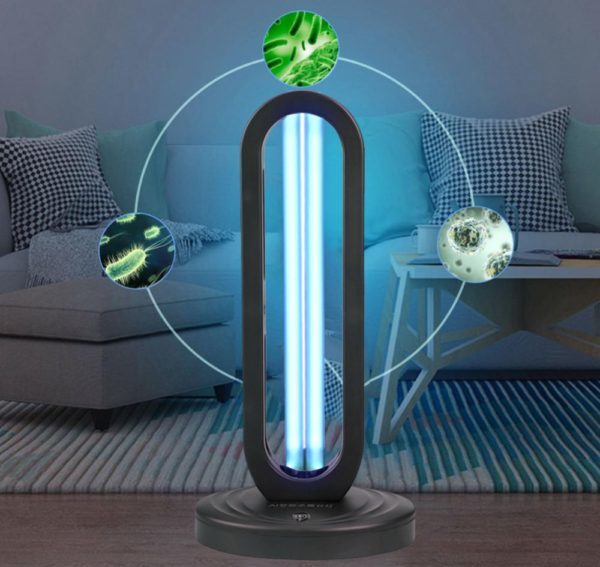
Some models of UV colored lamps are equipped with an automatic connection mechanism. If the disinfector will be used in the home, it is better to choose a portable model.
Design of the ultraviolet lamp
The ultraviolet lamp consists of the following elements:
- a bulb made of uviolet or quartz glass;
- Tungsten electrodes;
- metal base;
- molybdenum filaments;
- socket (ceramic);
- connector.

What is it for
Ultraviolet lamps are used:
- for therapeutic purposes. For laryngitis, maxillary sinusitis, non-pulmonary otitis media, influenza and tonsillitis. In the midst of epidemics UV lamps are used as a bactericidal agent. Children under 3 years of age are not recommended therapy with ultraviolet light. But it is possible if a newborn is found to have a mild form of liver dysfunction (manifested as jaundice). If you have a runny nose or sore throat, a model with a short wavelength is suitable. Often the set comes with nozzles;
- for water purification. The devices look like a tank with a lamp. The disinfector treats the liquid with rays, destroying harmful microbes. At the output you get clean and usable water. It is important to learn how to determine the amount of ultraviolet light needed for cleaning. In addition, you need to change the lamp when it begins to weaken;
- for plants. When they suffer from a lack of ultraviolet light, you can solve the issue with a phytolamp. Artificial radiation will help ensure the process of photosynthesis, which is necessary for full development.
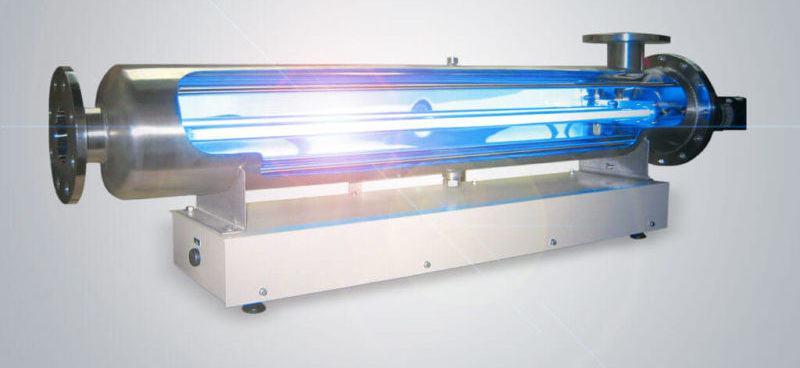
What kills ultraviolet lamp
Thanks to ultraviolet rays, the device is able to kill dangerous viruses, bacteria (staphylococci, bacilli, enterococci), fungi (yeast and mold) and mold.
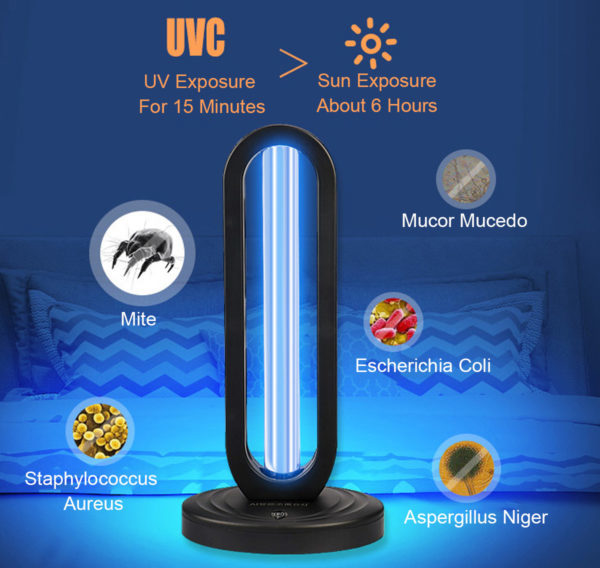
The antibacterial effect is due to the property of ultraviolet rays of the short range (up to 280 NM). They are able to penetrate the DNA of pathogenic microorganisms and destroy it from the inside, preventing further reproduction.
Also read: Differences between a recirculator and a quartz lamp.
How to use the lamp properly at home
It is believed that ultraviolet radiation, even in minimal amounts, can be harmful to health. When using the device for disinfection, it is necessary to adhere to safety precautions. Rules for using the disinfector:
- bactericidal device should be turned on only if there are no people in the room and only for the period of time specified in the instructions;
- If you want to treat any parts of your body with ultraviolet light, make sure the device is designed for this purpose. Before turning it on, you should wear the special glasses (often included) and cover your eyes. It is also worth adhering to the recommended mode, distance to the lamp and treatment time;
- If a C-spectrum lamp is used, the room should be ventilated after the treatment. This is necessary to ventilate the accumulated ozone;
- When using a household recirculator, you should make sure it is actually ozone-free. If it is not, it should not be switched on in the presence of people in the room.

How long you can stay under the lamp
To disinfect the room, the device is turned on for about 15-30 minutes. Even if it is a harmless ultraviolet lamp, it is better to leave the room for the duration of its operation and take plants and animals with you. The room should be checked at the end of the procedure. If the child shows signs of acute respiratory infections, the doctor may prescribe treatment with ultraviolet rays.
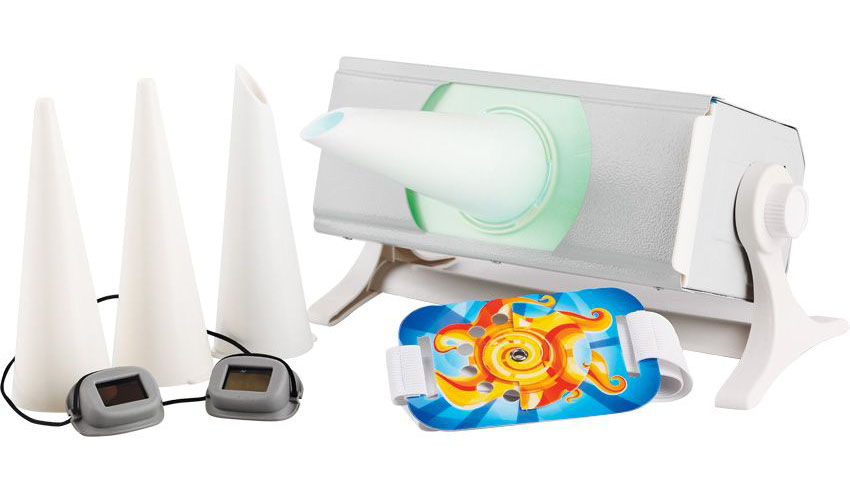
To do this, the child is put on special glasses, sat or laid on a couch (10 centimeters away from the device) and the procedure is carried out. It lasts no more than 10 minutes. The total course of treatment is 3 to 4 days. After 3 sessions the cold symptoms should disappear. When treating the nasal mucosa it can be irradiated only after the amount of secretions decreases. Depending on the intensity of the symptoms the daily dose of irradiation can be reduced to 3 minutes, then to 1.
Advantages and disadvantages
Among the advantages of ultraviolet bactericidal lamps, several main ones can be highlighted:
- due to the variety of devices can be used in different spheres of activity, as well as in the home;
- Most models last a long time at a low price;
- the devices almost instantly reach the operating parameters of the radiation power;
- modern recirculators are safe for health, they can be turned on without leaving the room.
The disadvantages include the release of ozone into the air. If you don't follow the safety rules, you could hurt yourself. In addition, lamps should not just be thrown away with the rest of the garbage. To do this, they take them to specialized collection points. Also, do not forget that you need to constantly monitor the correct operation of the lamp, gradually it will begin to lose its properties.
Video: Are you sure about the right UV lamp for your pet
Lifetime
On average, germicidal lamps last 8000-9000 hours. This depends on their purpose and design. The lifespan depends on whether or not the emitter will overheat during operation.
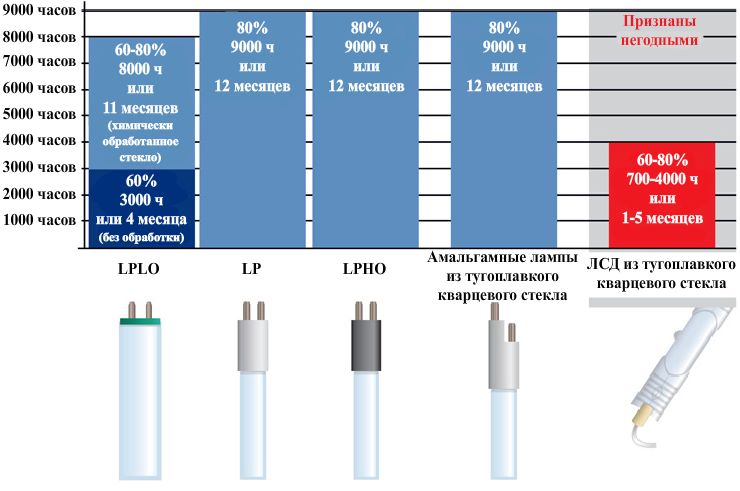
During operation, the lamp gradually wears out. This is reflected in the emission spectrum, so over time its properties will begin to change. If deviations in the operation of the device were noticed, it is better to replace it with a new one.
Conclusion
In order to avoid problems with the lamp during use, it is necessary to correctly identify the right model. For example, if you need a home disinfector, you should choose of recirculators with uviolet glass, which do not emit harmful substances into the air. For medical institutions more often acquire quartz devices.
